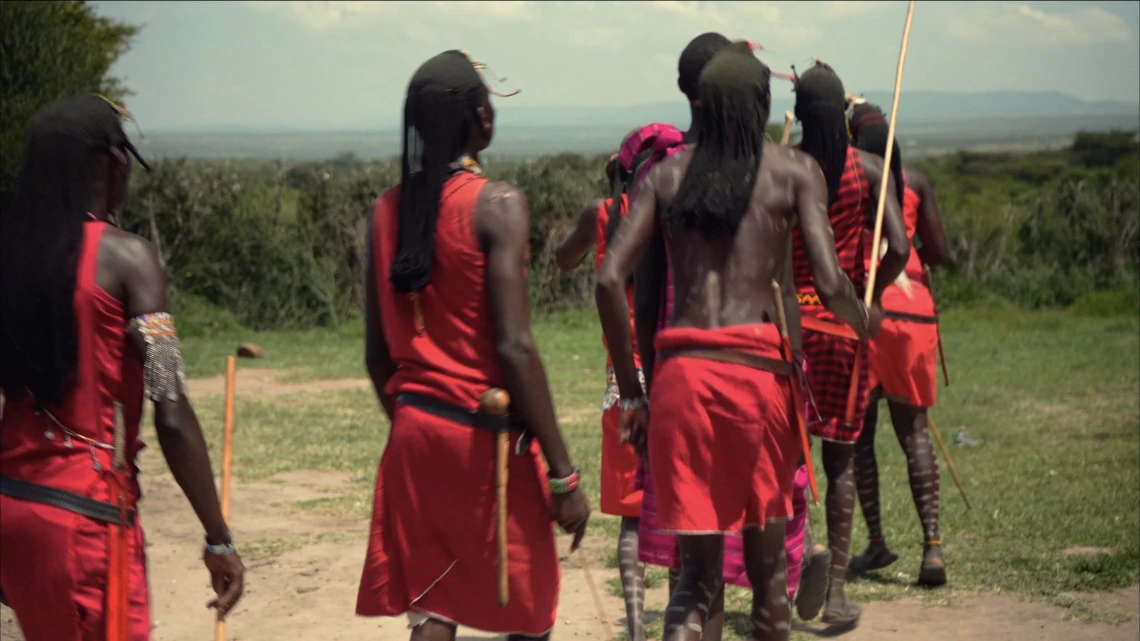Video Testimony from Maasai Leader Ole Simel: The Forcible Eviction of Maasai Indigenous Peoples from their Traditional Lands in the Ngorongoro Conservation Area in the Name of Wildlife Conservation

While glossy images of the Maasai and their iconic lands in Kenya and Tanzania often grace travel brochures, a starkly different reality of land theft and displacement unfolds behind the scenes. The Maasai are undoubtedly among the best-known Indigenous Peoples worldwide, and parts of their ancestral lands – such as the Serengeti or the Ngorongoro Crater – are iconic landscapes and UNESCO World Heritage Sites.
Yet, this idyllic facade conceals a much more troubling story of land theft, evictions, and violence. Despite the extensive efforts of governments, conservation organizations, and safari tourism providers to obscure these human rights violations and abuses, the Maasai remain determined to resist.
The Maasai (“people speaking the Maa language”) practice nomadic pastoralism, moving their herds seasonally across vast stretches of land in search of water and pasture. However, colonization and the establishment of game reserves and other Protected Areas have led to the forcible evictions of numerous Maasai communities and severely restricted their access to their ancestral lands.
In Kenya’s Masai Mara, we met with several Maasai who shared their experiences of coexisting peacefully with wildlife, emphasizing that their cattle graze alongside zebras and other animals. In fact, we were told these animals often seek refuge near Maasai settlements to avoid predators. They proudly explained the evolving traditions, highlighting how young Maasai warriors now showcase their strength and earn prestige by performing their high-jumping Adumu dance, replacing the former practice of lion hunting as a rite of passage.
Currently, the Maasai in Tanzania are battling the government's renewed attempts to evict them from their traditional lands. Over 170,000 Maasai are at risk or have already been evicted to make way for trophy hunting, tourism, and wildlife conservation in Loliondo and the Ngorongoro Conservation Area (NCA).
Tanzanian authorities have suppressed Maasai resistance through raids, shootings, violent repression of protests, arbitrary arrests, and the confiscation of cattle. They have also terminated essential health services, including those for children and pregnant women, and other public services such as schooling and access to drinking water. These actions are part of their efforts to coerce the Maasai into agreeing to so-called “voluntary relocations.”
Based on the practice of the fortress conservation model (an approach prioritizing strict protection of natural areas often at the expense of local communities), Tanzania’s government claims that there are “too many” Maasai and cattle, and allege that the Maasai are responsible for environmental destruction.
However, numerous studies attest to Indigenous Peoples’ superior skills in managing their lands and protecting the environmental values of the natural world. Research indicates that pastoralism does not degrade the environment; instead, it shapes and protects it, with traditional land management patterns allowing grasslands to regenerate.
Nevertheless, the Tanzanian government and Western conservation organizations collaborate to restrict Maasai’s land rights in the name of wildlife conservation, while simultaneously transforming the Maasai’s traditional lands into lucrative tourist destinations.
Pressure from international human rights organizations and United Nations investigative officials and bodies exposing these injustices has forced the government of Tanzania to establish two task forces to investigate land disputes. Now, more than ever, the struggle for recognition and protection of the human rights of Maasai Indigenous Peoples requires urgent and ongoing attention and support.
For more information on Tanzania’s efforts to evict the Maasai from their traditional lands in the Ngorongoro Conservation Area, click here.
For an IPLP report on how major conservation organizations like the World Wildlife Fund profit from safari tourism in the Ngorongoro Conservation Area while the government of Tanzania seeks to evict the Maasai from their traditional lands in the name of wildlife conservation, click here.

